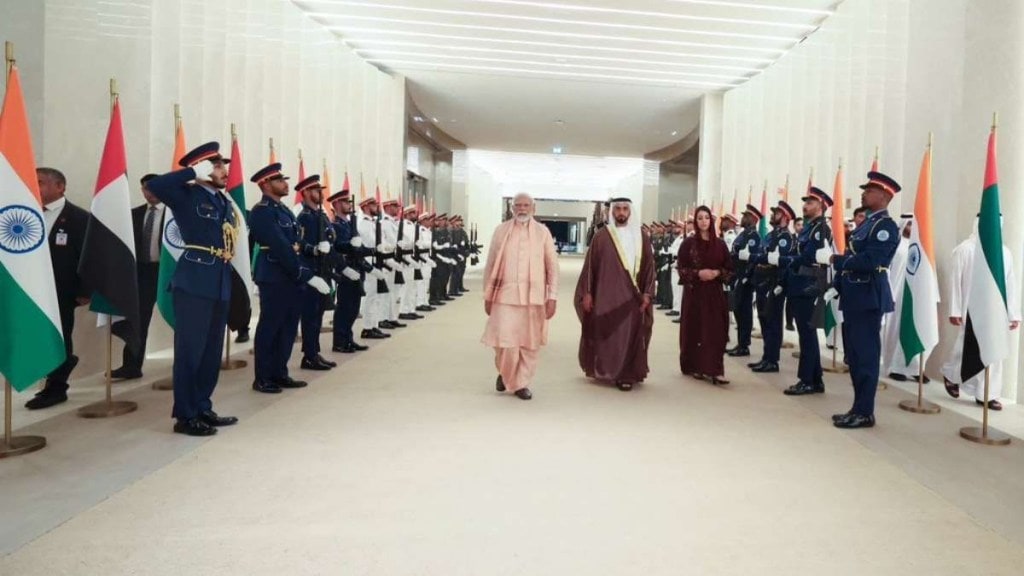The script of India’s Asian drama indicates hesitancy in looking eastwards but more sure-footedly engaging westwards with rising middle powers like the UAE, Qatar, and Saudi Arabia, where it has a huge diaspora. This indeed appears to be a felicitous strategy as these countries, too, are leveraging their abundant oil and gas resources and considerable financial heft to look increasingly eastwards in a multi-polar world. Prime Minister Narendra Modi’s visit to the UAE and Qatar—which may be one of his last trips abroad as his second term as premier draws to a close—clearly testifies to the considerable investment he has made to deepen India’s multi-faceted relationship with the Gulf. Since he became PM a decade ago, he has travelled 15 times to the Middle East. This was his seventh visit to the UAE and second to Qatar and what stood out was the deep personal connection he has forged with the President of UAE, Sheikh Mohammed bin Zayed Al Nahyan and Emir of Qatar, Sheikh Tamim bin Hamad Al Thani, The building of a Hindu temple in Abu Dhabi and the release of eight former naval personnel who faced a death sentence in Qatar are unrelated but reflect the chemistry between Modi and these rulers.
India-UAE-Qatar relations are on an upswing. The uptick in India’s trade with these Gulf nations of course reflects its growing requirements for oil and gas. At a time of weakening global oil demand and the fact that US’s energy imports from the Middle East are negligible due to its shale boom, it is countries to the east like India and China that have become strategically more important. The outcomes of Modi’s visit indicate a strengthening of the energy partnership and resolve to advance cooperation in hydrogen, solar energy, and grid connectivity. India already has a comprehensive economic partnership agreement with the UAE which aims to step up bilateral trade to $115 billion within five years from $84 billion in FY23.
With Qatar, India’s two-way trade was $18.7 billion last fiscal. The UAE is currently our third largest trading partner and is also India’s second largest export destination. A bilateral investment treaty was signed to protect investments. The 10 MoUs with the UAE include an intergovernmental framework on the India Middle East Economic Corridor and interlinking of digital payment platforms like UPI, credit and debit cards and cooperation in digital infrastructure projects. Ahead of the PM’s visit, RITES Limited inked an agreement with Abu Dhabi Ports Company.
UAE and Qatar are also looking to a future beyond oil and gas and are deploying their financial clout in countries which provide profitable opportunities. In Qatar, Modi’s discussions emphasised the need for strategic investments and partnerships in technology. As the world’s fastest growing large economy, India is definitely a priority destination. UAE’s sovereign wealth funds—which manage more than $1.3 trillion—are gearing up to participate in the growth story, especially through investments in infrastructure. When Modi made his fifth visit to UAE in July 2023, it was announced that the $850 billion Abu Dhabi Investment Authority would establish a presence in Gujarat International Finance Tec-City which augurs well for big-ticket investments. UAE is the seventh largest investor from April 2000 to September 2023 while Qatar ranks the 24th. All of this can grow manifold as India deepens its Gulf engagement.
Disclaimer: Views expressed are personal and do not reflect the official position or policy of Financial Express Online. Reproducing this content without permission is prohibited.

